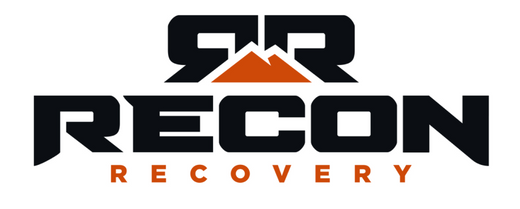
Snatch Blocks, Tow Hooks, D-Rings, and Pulleys What are they and why you should never hit the dirt without them?
Snatch Blocks, Tow Hooks, D-Rings, and Pulleys
What are they and why you should never hit the dirt without them?

Off-road driving is a thrilling adventure that can bring you to new and undiscovered locations or right back to old stomping grounds. In the off chance that things go south, having the right equipment to ensure a safe and successful journey can be the difference between an epic trail day or dragging your rig back to the trailhead. Among the seemingly endless list of “must-have” tools are snatch blocks, tow hooks, D-rings and pulleys. We will discuss what these items are, their importance, and how to use them effectively during off-road driving.
Having the appropriate attachment points and recovery elements are crucial to the safety and success of any recovery. While a factory tow point or a trailer hitch receiver may work in a pinch, those and other provisions may not make the cut when you need it most. Aftermarket tow hooks, snatch blocks, D-Rings and pulleys are ideal solutions to have onboard any off-road vehicle to ensure a great day out on the trail doesn’t get cut short.

Snatch Blocks:
A snatch block is a pulley system that is commonly used in off-road recoveries. Typically, they are constructed of metal with a grooved wheel at the center that guides the direction of a winch line. Snatch blocks provide a mechanical advantage to the winch, often doubling pulling power while reducing electrical amperage draw. This allows the user to pull heavy loads or vehicles out of tricky situations without overworking the winch, thereby increasing its usable life.

The snatch block is a versatile tool that can be used in various situations. For instance, if you are stuck in a mud pit or have a vehicle stuck in a ditch, a snatch block can be used to winch the vehicle without putting excessive stress on the winch or line. Another scenario when you may need to break out the snatch blocks is when there are obstacles in the winching path impeding a straight-line route through the trail. In these cases, run the winch line from your final winch point through the snatch block that is anchored to an adjacent point in front of the vehicle that will steer clear of the obstacle.
Tow Hooks/Loops:

Tow hooks or loops are strong points on the frame of a vehicle where you can secure recovery straps, kinetic rope, etc., and are also used to connect winch line to a recovery point like a tree or another vehicle. They are designed to withstand heavy loads and are available in various sizes and shapes. When choosing a tow hook for the end of your winch line, be sure to select the right one for your application which requires knowledge of fully loaded vehicle weight and winch capacity.

Tow hooks or loops are important because they provide a secure attachment point for winching or towing. If you do not have a tow hook or loop, prompting the use of other weak attachment points, you may risk damaging your vehicle or causing injury to yourself or others. It is essential to have strong and durable tow hooks installed on your vehicle before heading out for an off-road adventure. Take extra care if you are relying on factory towing points or frame supports as the forces exerted in off-road recovery scenarios can be much greater than that of towing on flat, hard, unobstructed ground.
D-Rings:
D-rings are another vital tool to have for off-road driving and are used in conjunction with or instead of tow hooks/loops. They are D-shaped metal rings (hence the name) serving as anchor points for tow straps or winch line on the vehicle allowing for effective pulling, lifting, or towing. D-rings are commonly mounted to a clevis on off-road bumpers and/or hitch receiver mounts with appropriate adapters, like those offered from Factor 55 and Superwinch.

They are easy to install and remove, making them a convenient tool to have onboard. It is important to ensure that the D-rings are properly secured and undamaged before using them in the field. Add isolator washers and pads to reduce vibration-induced noise and clatter while driving if leaving them attached to the vehicle.

Pulleys:

Similar to snatch blocks, a pulley block is a hardened wheel that when anchored, provides increased mechanical advantage for winching. They feature an integrated hook that allows for more mounting options should you need to get creative during a recovery.

Other pulley systems like the Factor 55 products, are a lightweight self-recovery option similar to pulley blocks. By anchoring the pulley via the attached synthetic rope to a winch point, looping winch line through it, and running the line back to the stranded vehicle, solo recovery can be done very quickly without handling the bulkier pulley block.
Off-road driving can be a challenging and exhilarating experience, but that elation can vanish the moment your adventure rig ends up between a rock and a hard place. It is imperative to have the right equipment onboard to keep the good times and exploration rolling and ensure a safe and successful journey. Snatch blocks, tow hooks, D-rings and pulleys are all important to have for off-road recoveries. These tools can help you extract your vehicle, or your buddy’s, from tough situations without putting excessive stress on your equipment.
Remember to always use these tools safely to avoid causing damage or injury to yourself, your rig and others around you. If you are unsure about how to use your recovery gear, consult with an expert from the manufacturer, or hit the trail with more experienced enthusiasts that can show you the ropes.
